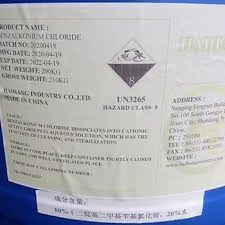water treatment flocculation chemicals
The Role of Flocculation Chemicals in Water Treatment
Water treatment is a critical process that ensures the safety and quality of drinking water. One of the key steps in this process is flocculation, which involves the aggregation of suspended particles into larger clusters, or flocs, allowing for their easy removal from water. Flocculation is essential for treating turbid water, making it clearer and safer for consumption. This article explores the importance of flocculation chemicals in water treatment.
Flocculation chemicals, also known as coagulants, play a vital role in facilitating the aggregation of suspended solids. Commonly used flocculants include alum (aluminum sulfate), ferric chloride, and organic polymers. These chemicals work by neutralizing the charges on suspended particles, which helps them stick together and form larger aggregates. The efficiency of the flocculation process depends on several factors, including the type and dosage of the chemical used, the pH of the water, and the temperature.
Alum is one of the oldest and most widely used flocculants in water treatment. It has been used for centuries to clarify water and remove impurities. When added to water, alum dissociates into aluminum ions, which react with dissolved organic matter and suspended particles. This reaction results in the formation of micro-flocs that can grow larger and settle out during sedimentation.
Ferric chloride, another common coagulant, is particularly effective in removing phosphorus from wastewater. It not only helps in the flocculation process but also promotes the precipitation of suspended solids, which is beneficial in treating industrial wastewater. Ferric chloride can effectively reduce the turbidity of water and enhance the overall quality of treated effluent.
water treatment flocculation chemicals

In addition to metal-based coagulants, organic polymers, such as polyacrylamides, have gained popularity in recent years. These synthetic coagulants are particularly effective in treating low-turbidity waters and can enhance the stability of flocs. They are often used in conjunction with traditional coagulants to improve floc formation and settling rates.
The choice of flocculation chemicals depends on the specific characteristics of the water being treated. Factors like the source of water, concentration of impurities, and the desired quality of the treated water influence the selection process. Proper dosages and pH adjustments are crucial to optimize the effectiveness of the flocculants and achieve the best possible water quality.
While flocculation chemicals are essential for effective water treatment, they must be used judiciously. Overuse can lead to higher concentrations of residual chemicals in treated water, potentially impacting human health and the environment. Therefore, routine monitoring and adjustment of chemical dosages are necessary to maintain safe and effective water quality standards.
In conclusion, flocculation chemicals are indispensable in the water treatment process. Their ability to aggregate and remove suspended particles significantly improves water clarity and safety. As water treatment technologies evolve, the development of more efficient and environmentally friendly flocculants will continue to be a priority. Understanding the role and application of these chemicals is vital for optimizing water treatment processes and ensuring access to clean, safe drinking water for all.
-
LK-319 Special Scale And Corrosion Inhibitor For Steel Plants: Advanced Solutions for Industrial Water SystemsNewsAug.22,2025
-
Flocculant Water Treatment: Essential Chemical Solutions for Purification ProcessesNewsAug.22,2025
-
Isothiazolinones: Versatile Microbial Control Agents for Industrial and Consumer ApplicationsNewsAug.22,2025
-
Scale Inhibitor: Key Solutions for Water System Scale PreventionNewsAug.22,2025
-
Organophosphonates: Versatile Scale Inhibitors for Industrial Water SystemsNewsAug.22,2025
-
Scale and Corrosion Inhibitor: Essential Chemical Solutions for Water System MaintenanceNewsAug.22,2025





